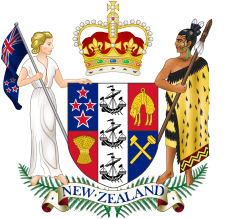New Zealand: Government
Key Figures
- Chief of State:
- King Charles III represented by Governor-General Dame Cindy Kiro
- Head of Government:
- Prime Minister Christopher Luxon; Deputy Prime Minister Winston Peters
Overview
- Government Name:
- New Zealand
- Constitution:
- Adopted: 1987; Consists of a collection of statutes. No supreme document or supreme law in the constitution, and the constitution is not elevated above any other law.
- Government Type:
- Parliamentary Democracy and a Commonwealth Realm

Index of Economic Freedom
Country Risk Rating
Government Branches
| Main Powers | Election Process | Election Cycle 1 | |
|---|---|---|---|
| Executive | Monarch has formal role in executive, but also in charge of formation and dismissal of governments. Governor-general acts as the monarch's vice-regal representative, has a ceremonial role in terms of traveling to attend conferences, and summons or dissolves parliament. The prime minister sets cabinet agenda, as well as appoints and dismisses ministers. |
Monarch is hereditary, governor-general is appointed by the monarch, and prime minister is appointed by the governor-general. |
Governor-General & Prime Minister: At His Majesty's discretion |
| Judicial | Acts as the highest court and the court of last resort for New Zealand. |
Appointed by the Governor-General on the recommendation of the Attorney-General. |
Life appointment, mandatory retirement at age 70 |
| Legislative | House of Representatives serves as the sole house in parliament and proposes bills to later become laws. They become Acts after being approved three times by house votes and then receiving the Royal Assent from the Governor-General. |
Elections are by the Mixed Member Proportional electoral system (MMP). |
3 years |
Regional Trade Blocs
International Organization Participation [2]
Environmental Agreements [3]
Tax Information [2]
- Tax Authority:
- Inland Revenue & New Zealand Customs
- Tax Name:
- GST
Sources:
- ElectionGuide http://www.electionguide.org/
- EY, http://www.ey.com
- CIA World Factbook, https://www.cia.gov/the-world-factbook/
- U.S. Bilateral Relations Fact Sheets http://www.state.gov/r/pa/ei/bgn/


